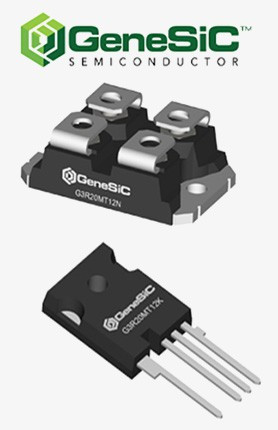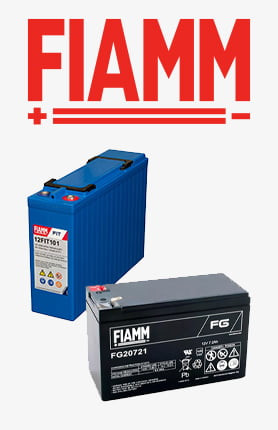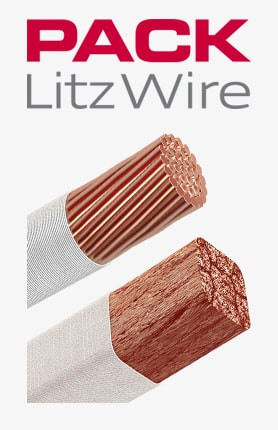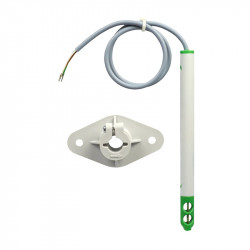trebuie să fii logat
-
întoarce-teX
-
Componente
-
-
Category
-
Semiconductoare
- Diode
- tiristoare
- Module izolate electric
- Redresoare în punte
-
Tranzistoare
- tranzistoare GeneSiC
- Module MOSFET Mitsubishi SiC
- Module MOSFET STARPOWER SiC
- Module MOSFET ABB SiC
- Module IGBT de la MITSUBISHI
- Module de tranzistori MITSUBISHI
- module MITSUBISHI MOSFET
- Module de tranzistori ABB
- Module IGBT de la POWEREX
- Module IGBT - de la INFINEON (EUPEC)
- Elemente semiconductoare din carbură de siliciu
- Accesați subcategoria
- Șoferii
- Blocuri de putere
- Accesați subcategoria
- Traductoare de curent și tensiune LEM
-
Componente pasive (condensatori, rezistențe, siguranțe, filtre)
- Rezistoare
-
Siguranțe
- Siguranțe miniaturale pentru sisteme electronice din seria ABC și AGC
- Siguranțe tubulare cu acțiune rapidă
- Inserții întârziate cu caracteristici GL/GG și AM
- Legături sigure ultra-rapide
- Siguranțe standard britanice și americane cu acțiune rapidă
- Siguranțe cu acțiune rapidă standard european
- Siguranțe de tracțiune
- Siguranțe de înaltă tensiune
- Accesați subcategoria
-
Condensatoare
- Condensatoare pentru motoare
- Condensatoare electrolitice
- Condensatori Icel Film
- Condensatoare de putere
- Condensatoare pentru circuite DC
- Condensatoare de compensare a puterii
- Condensatoare de înaltă tensiune
- Condensatoare pentru încălzire prin inducție
- Condensatoare de impulsuri
- Condensatoare DC LINK
- Condensatoare pentru circuite AC/DC
- Accesați subcategoria
- Filtre anti-interferențe
- Supercondensatoare
-
Protecție la supratensiune
- Descărcătoare de supratensiune pentru aplicații RF
- Descărcătoare de supratensiune pentru sisteme de vedere
- Descărcătoare de supratensiune pentru linia de alimentare
- Descărcătoare de supratensiune cu LED
- Descărcătoare de supratensiune pentru fotovoltaice
- Descărcătoare de supratensiune pentru sisteme de cântărire
- Descărcătoare de supratensiune pentru fieldbus
- Accesați subcategoria
- Filtre de emisii revelatoare TEMPEST
- Accesați subcategoria
-
Relee și Contactoare
- Teoria releelor și contactoarelor
- Relee cu stare solidă trifazată CA
- Relee cu stare solidă DC
- Regulatoare, sisteme de control și accesorii
- Porniri ușoare și contactoare inversoare
- Relee electromecanice
- Contactoare
- Comutatoare rotative
-
Relee cu stare solidă CA monofazate
- Relee cu stare solidă CA monofazate Seria 1 | D2425 | D2450
- Relee semifazate CA monofazate, seria CWA și CWD
- Relee semifazate CA monofazate seriile CMRA și CMRD
- Relee cu stare solidă CA monofazate Seria PS
- Relee cu stare solidă AC seria duble și cvadruple D24 D, TD24 Q, H12D48 D
- Relee monofazate din seria GN
- Relee cu stare solidă CA monofazate Seria CKR
- Relee monofazate pentru șină DIN AC SERIA ERDA și ERAA
- Relee AC monofazate pentru curent de 150A
- Relee duble cu stare solidă integrate cu radiator pe șină DIN
- Accesați subcategoria
- Relee cu stare solidă imprimabile monofazate CA
- Relee de interfață
- Accesați subcategoria
- Miezuri și alte componente inductive
- Radiatoare, Varistoare, Protectie termica
- Fani
- Aer conditionat, Accesorii tablou, Racitoare
-
Baterii, încărcătoare, surse de alimentare tampon și convertoare
- Baterii, încărcătoare - descriere teoretică
- Baterii litiu-ion. Baterii personalizate. Sistem de management al bateriei (BMS)
- baterii
- Incarcatoare de baterii si accesorii
- UPS și surse de alimentare tampon
- Convertoare si accesorii pentru fotovoltaice
- Stocarea energiei
- Pile de combustibil cu hidrogen
- Celule litiu-ion
- Accesați subcategoria
- Automatizare
-
Cabluri, fire Litz, Conduite, Conexiuni flexibile
- Firele
- Presetupe și manșoane
- Chipurile
-
Cabluri pentru aplicatii speciale
- Cabluri de prelungire și compensare
- Cabluri de termocuplu
- Cabluri de conectare pentru senzori PT
- Cabluri cu mai multe fire de temperatură. -60°C până la +1400°C
- Cabluri de medie tensiune SILICOUL
- Cabluri de aprindere
- Cabluri de incalzire
- Cabluri cu un singur conductor temp. -60°C până la +450°C
- Fire de cale ferată
- Cabluri de încălzire în ex
- Cabluri pentru industria de apărare
- Accesați subcategoria
- tricouri
-
Impletituri
- Impletituri plate
- Impletituri rotunde
- Impletituri foarte flexibile - plate
- Impletituri foarte flexibile - rotunde
- Impletituri cilindrice de cupru
- Impletituri si capace cilindrice din cupru
- Curele flexibile de împământare
- Impletituri cilindrice din otel zincat si inoxidabil
- Impletituri de cupru izolate PVC - temperatura de pana la 85 de grade C
- Impletituri plate din aluminiu
- Kit de conectare - impletituri si tuburi
- Accesați subcategoria
- Echipament de tracțiune
- Capse de cablu
- Sine flexibile izolate
- Sine flexibile multistrat
- Sisteme de management al cablurilor
- Accesați subcategoria
- Vezi toate categoriile
-
Semiconductoare
-
-
- Furnizori
-
Aplicații
- Automatizare HVAC
- Automatizare industrială
- Băncile de energie
- Cercetare si masuratori de laborator
- Componente pentru zonele cu pericol de explozie (EX)
- Echipament industrial de protectie
- Echipamente pentru dulapuri de distributie si control
- Exploatare minieră, metalurgie și turnătorie
- Imprimare
- Încălzire prin inducție
- Inginerie energetică
- Mașini CNC
- Masini de sudura si sudori
- Mașini de uscare și prelucrare a lemnului
- Masini pentru termoformarea materialelor plastice
- Măsurarea și reglarea temperaturii
- Motoare si transformatoare
- Surse de alimentare (UPS) și sisteme redresoare
- Tracțiune cu tramvai și feroviar
- Unități DC și AC (invertoare)
-
Instalare
-
-
Inductori
-
-
Dispozitive de inducție
-
-
Serviciu
-
- Kontakt
- Zobacz wszystkie kategorie
Flow transducers

Recent advances in flow detection have resulted in more accurate, durable and cost-effective meters. It is becoming increasingly important to be able to connect flow meters to a computer for instant flow readings, remote flow control or to enable unattended process operation.
To meet these demands, new types of flow transducers are being introduced and older designs are being improved and upgraded.
The primary factors to consider when selecting a flow transducer are:
- type of medium e.g. water, air;
- medium flow velocity range;
- medium temperature and pressure;
- accuracy;
- measuring range;
- output value type e.g. voltage, current;
- ease of installation and maintenance requirements.
Let's take a closer look at the principle of such transducers and what types we can find in the industrial sector.
Working principle of flow transducers
Flowmeters are used to measure the velocity of air or liquid flow. Flow meter sensors work in different ways, but have the same end goal: to provide the most accurate and repeatable flow measurement for a specific application, whether for process control, general scientific research or semiconductor processing.
The most common solutions can calculate the flow level or its quantity based on the cross-sectional area of the pipe. Then, the analytical components of the transducers convert this value into an appropriate output signal.
You can find transducers based on Faraday's law of induction. A medium flows through a pipe in a certain magnetic field, producing a voltage proportional to the amount of that medium or its velocity.
Another type are transducers, which through the flowing medium, count the resulting turbulence depending on the speed of the medium. If we know the cross-section of the pipe, we can determine the flow rate.
Other solutions use ultrasound reflections and measure the transit time of the signals between the ultrasound transducers. By calculating the time difference between the reflections received by the transducers, the flow rate can be determined and converted to an output value accordingly.
There are also sensors with spring-loaded pistons. Through the flowing medium, a piston located in a valve of the transducer housing exerts pressure on a spring. The position of the spring is monitored by special sensors, usually magnetic, which send the corresponding analogue signals to the evaluation units.
Applications for flow transducers in industry
Flow transducers are used in almost all areas of process and engineering where liquids or gases are used, e.g. to provide equipment and machinery with coolant and lubricants, in hall and building ventilation systems, in processing etc. If the flow is not correct, significant damage and downtime in the industry can result. Inaccurate flow measurements or failure to measure can cause serious and irreversible consequences. In modern installations, electronic monitoring systems are used to prevent such situations. Below are some of the many applications of flow sensors:
- controlling irrigation and water consumption in the agricultural industry;
- maintaining energy efficiency and usability of HVAC systems;
- wastewater treatment facilities;
- monitoring product flow in the food, pharmaceutical and other industries;
- monitoring pump operation, balancing system flow;
- diesel and other oil flow monitoring, cooling water flow in power industry;
- monitoring of water, fuel and lubricant consumption and related products in the form of sludge and slurry in the mining industry.
Choosing the right solution for your industrial process
Choosing the best flow transducer for industrial systems is not as complicated as it sounds. The most important variables in this choice are pipe size and the type of fluid used in the cooling system. There are many flow monitoring technologies, such as the models described in this article and each type of device can be purchased for different pipe sizes.
For a basic water-cooling system, a simple impeller flowmeter is usually sufficient. These are economical and easy to install in almost any system, and they are compatible with many types of pipe. The unit is simply installed so that the impeller is in line with the direction of water flow. Many impeller-type meters are available with temperature probes that plug directly into the meter to calculate overall efficiency.
Ultrasonic meters are useful in applications where liquids other than water are present, as some chemicals can damage impellers. Ultrasonic meters can also measure flow in both directions.
Electromagnetic flowmeters measure flow in conductive fluids. Electromagnetic flow meters are useful for slurries and other liquids containing solids that could contaminate the impeller or interfere with the ultrasonic transducer.
In summary, improving the efficiency of industrial systems has a direct impact on a facility's bottom line. Flow monitoring is a critical variable in efficiency calculations. To best manage a facility's energy consumption, more information is always better so invest in durable, high-quality flow measurement equipment.
Related product
Related posts
 Now available – DC/DC converters from PREMIUM
Now available – DC/DC converters from PREMIUM
 New release in DACPOL lighting for lathes – Kira covers
New release in DACPOL lighting for lathes – Kira covers





Leave a comment